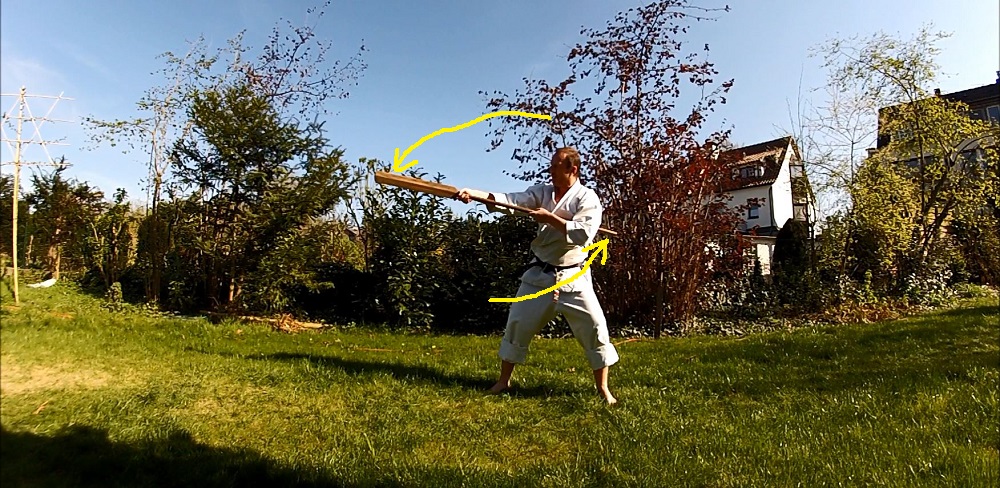One of the more famous kata with the uēku is Tsuken Sunakake no Kon (oki.: Chikin Sunakachi nu Kun). As it is generally demonstrated using the uēku (oar) it is also referred to as Chikin Sunakachi nu Uēku-dī (the skills of the oar etc.). The kata is said to have been handed down by Tsuken Uēkata Seisoku. Tsuken Uēkata was a native of Shuri Tōbaru village, where the ruins of his residence still remain today.
Characteristic features of Tsuken Sunakake no Kon are the butt-end nagashi-uke in the beginning, followed by a gyaku-giri while leaning the body to the left and followed by sunakake and shōmen-uchi. In addition, from jōdan nagashi-uke to gyaku-uchi followed by drawing a circle with the tip of the uēku (mawashi-uke) and finishing with another gyaku-uchi. There are also many yoko-uchi while turning the body. It contains the technique of shoveling sand into the eyes of the opponent, which is referred to as sunakake, as well as some kaeshi-uchi.

Jōdan-kaeshi-uchi in Kōkutsu-dachi.
In Matayoshi lineage kobudō, Chikin Akanchū nu Uēku has been handed down. Hokama Tetsuhiro Sensei teaches Goeku no Uēku and there are further styles and schools that use the uēku either for kata or for applied bugei.
In the clip below I use an Canadian made uēku which is quite long, heavy, and a little bit unbalanced, thus a bit difficult to handle, yet it generates immense destructive power. Anyway, with its length it is perfect for Westerners. The techniques seen here are just some combinations from my personal studies.
It should be noted that uēku, other than the bō, has two different ends. The most important thing in uēku-dī (the skills of the oar) are therefore the hand changes.
© 2015 – 2021, Andreas Quast. All rights reserved.
